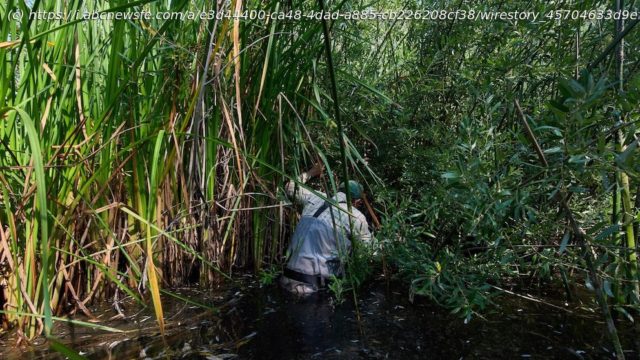Efforts to restore the red-legged frog to Southern California, where it had all but disappeared, seemed doomed when the COVID-19 pandemic struck and restrictions were put in place at the U.S.-Mexico border
PLATEAU ECOLOGICAL The scientist traipses to a pond wearing rubber boots but he doesn’t enter the water. Instead, Brad Hollingsworth squats next to its swampy edge and retrieves a recording device the size of a deck of cards. He then opens it up and removes a tiny memory card containing 18 hours of sound.
Back at his office at the San Diego Natural History Museum, the herpetologist — an expert in reptiles and amphibians — uses artificial intelligence to analyze the data on the card. Within three minutes, he knows a host of animals visit the pond — where native red-legged frogs were reintroduced after largely disappearing in Southern California. There were owl hoots, woodpecker pecks, coyote howls and tree frog ribbits. But no croaking from the invasive bullfrog, which has decimated the native red-legged frog population over the past century.
It was another good day in his efforts to increase the population of the red-legged frog and restore an ecosystem spanning the U.S.-Mexico border. The efforts come as the Trump administration builds more walls along the border, raising concerns about the impact on wildlife.
At 2 to 5 inches long (5 to 13 centimeters), red-legged frogs are the largest native frogs in the West and once were found in abundance up and down the California coast and into Baja California in Mexico.
The species is widely believed to be the star of Mark Twain’s 1865 short story, “The Celebrated Jumping Frog of Calaveras County“, and their crimson hind legs were eaten during the Gold Rush. But as the red-legged frog declined in numbers, the bullfrog — with its even bigger hind legs — was introduced to menus during California’s booming growth in the late 19th and early 20th centuries.
The red-legged frog population was decimated by the insatiable appetite of the bullfrogs and the disease the non-native species brought in, but also because it lost much of its habitat to drought and human development in the shape of homes, dams and more.
Hollingsworth couldn’t estimate the number of red-legged frogs that remain, but said they have disappeared from 95% of their historical range in Southern California.
Robert Fisher of the U.S. Geological Survey’s Amphibian Research and Monitoring Initiative Program searched for the frog for decades across some 250 miles (400 kilometers) from Los Angeles to the border.






